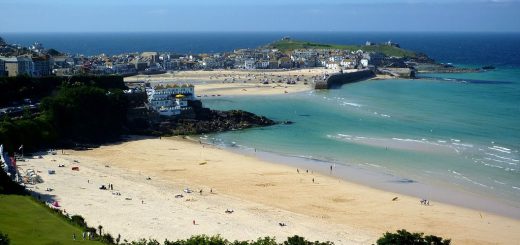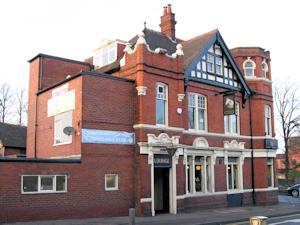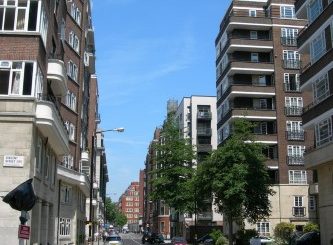The Three Crutches, Strood
One night in the 13th century a Templar Knight named Sir Richard or Reginald Braybrooke was murdered whilst travelling (probably) to Temple Manor after visiting Lord Cobham. He was shot through the heart by and arrow and his body was not discovered until the following day at a location where three roads met. The murderer was never caught or brought to justice. A three sided monument in memory of Sir Richard Braybrooke was erected at the scene of the killing and on each of the three sides was a cross. The site was henceforth known as ‘The Three Crosses’. The monument has long since been lost, though the old public house called ‘The Three Crutches’ is thought to be close to the site of the murder and is thought to be named after the ‘The Three Crosses’. It has been suggested that Crutches (pronounced ‘crootches’) is possibly an old country name for ‘crosses’, and that the Inn was originally known as ‘The Three Crouches’ before a more recent landlord changed its name to ‘The Three Crutches’.
 Henry Smetham in his ‘History of Strood’ (1899) gives the following account of the legend and throws some doubt on the connection between the Inn and the murder site. “The village of Luddesden, at a short distance from the river, and on the road to Cobham Park, is connected with an old legend of the Medway and the ruins of the Temple…. When the Knights Templars flourished in all their glory, one of their members, Sir Reginald Braybrooke, had been to visit the Lord Cobham, and was returning to the Temple by a lonely path on the river’s brink, when he was pierced to the heart by an arrow from a hand unseen. Next morning he was found weltering in his blood, quite dead, and the fatal arrow still sticking in his side. The Templars used every means to discover the assassin, but in vain; and in commemoration of the deed, and to solicit the prayers of all faithful passengers tor the soul of their brother, they erected a triangular monument on the spot where the corpse was found, with a cross on each side, fronting the three roads that united at this place. The spot ever afterwards obtained the name of the Three Crosses. The murderer was not discovered during his own lifetime; but the secret was brought to light in a singular manner.
Henry Smetham in his ‘History of Strood’ (1899) gives the following account of the legend and throws some doubt on the connection between the Inn and the murder site. “The village of Luddesden, at a short distance from the river, and on the road to Cobham Park, is connected with an old legend of the Medway and the ruins of the Temple…. When the Knights Templars flourished in all their glory, one of their members, Sir Reginald Braybrooke, had been to visit the Lord Cobham, and was returning to the Temple by a lonely path on the river’s brink, when he was pierced to the heart by an arrow from a hand unseen. Next morning he was found weltering in his blood, quite dead, and the fatal arrow still sticking in his side. The Templars used every means to discover the assassin, but in vain; and in commemoration of the deed, and to solicit the prayers of all faithful passengers tor the soul of their brother, they erected a triangular monument on the spot where the corpse was found, with a cross on each side, fronting the three roads that united at this place. The spot ever afterwards obtained the name of the Three Crosses. The murderer was not discovered during his own lifetime; but the secret was brought to light in a singular manner.
“On one bitterly cold winter night, some years afterwards, one of the brethren, who had been to administer the last consolations of religion to an expiring sinner, arrived at Luddesden in a woeful plight from cold and exhaustion. He saw but one light, from the window of a poor hovel in the village, and, knocking at the door, he entered to solicit shelter and a seat by the fire. He found the place inhabited but by one poor old woman, who was sick in bed. She was almost in the last extremities, and the instant the ecclesiastic entered, he remarked that the coverlet of her bed was no other than the cloak of the murdered Sir Reginald Braybrooke, whose confessor he had been. He immediately conjured her, ere she hastened into the presence of her God, to tell whether she knew anything of the murder. She then confessed that her husband, an old soldier, who had fancied himself wronged and insulted by Sir Reginald, had shot the fatal arrow to his heart; that after the commission of the deed he never enjoyed one moment’s repose or happiness, and that one morning, a few months afterwards, he was found at the bottom of the chalk pit dashed to pieces. She did not know whether this catastrophe was accidental, or whether in a fit of remorse he had put an end to his miserable life. Having made this confession she expired, and the priest, taking away the cloak, conveyed it to the Temple, where it was long preserved by the Knights as a sad relic of their brother.
“The precise spot where the monument stood is not now known, all traces of it having long since disappeared. A small public house in the neighbourhood has borrowed a name from it, with a most whimsical perversion. From Three Crosses, the original name of the monument, it was corrupted in the course of time to the Three Crowches; and a modern landlord, seeing no meaning in these words, improved it, and made it more intelligible to his customers, by giving his house the sign of the ‘ Three Crutches.’ Close to this house, on a rising ground over-shadowed by one of the largest walnut trees in England, is the spring that formerly supplied the pilgrims to this spot with water.”
The explanation lies probably in the following
Crouch, a cross (from the Latin crux). That all cross-roads had formerly a cross of wood or stone near the intersection, is pretty clear from the names still retained as John’s Cross, Mark Cross, Stone Cross, High Cross, Hand Cross, New Cross, Wych Cross (perhaps so named in honour of St. Robert de la Wych, Bishop of Chichester). All these and many others occur in Sussex. [These crosses served also for direction posts. Probably this was their primary use, the religious idea being an afterthought.] At Seaford such a spot bears the name of ” the Crouch.” We find also High Crouch, Katty’s Crouch [St Katherine’s], Fair Crouch, Crow Crouch, &c., &c. Crouched or Crutched Friars were an order of religion, who bore a cross upon their robes. The name crutch applied to the supports used by cripples is evidently from the same root. A person dwelling near some wayside cross would feel proud of such an appellative as, John atte Crouch, a form in which the name frequently occurs. Croucher is another form of the word.
This narrative, in its application to the inn concerned, is open to doubt. It is difficult to conjecture ” the lonely path on the river’s brink …. fronting three roads that united at this place,” leading from Ivuddesdown to the Temple. Again, it is rather a far cry that a murder at a spot so far removed from the ” Three Crutches ” inn on Cobham Road, should give rise to its name. The writer has also been informed that the anterior name of the “Three Crutches ” inn was “The Bear and Ragged Staff.” His informant was an old lady, now dead, who was born there.




Re: The Three Crutches, Strood
The Three Crutches Inn is also said to be haunted by two ghosts.
One is seen sitting at an upper floor window. The other is a finely dressed man who walks through the wall in the dining room.
Nearby are four sarson stones which were found during roadworks. They have been set up in a four poster like setting.